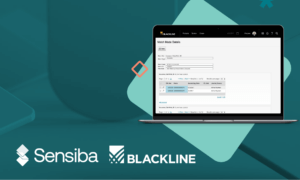Get Prepared for ASC 842 Lease Accounting Standard
Private companies and nonprofits will soon be subject to the ASC 842 lease accounting standard. Adopting this standard is effective for annual reporting periods ending after December 15, 2021. For calendar year-end companies, the effective date is January 1, 2022. For companies with a fiscal year-end, the effective date would be the first interim period after their fiscal year-end (i.e., the effective date for a fiscal year-end of June 30, 2022, would be July 1, 2022).
Our Six Helpful Steps to Prepare Your Company for ASC 842 Compliance
1. Review Your General Ledger Accounts.
Review your general ledger accounts, looking specifically for fixed recurring and variable payments for existing leases and other contracts, which may have embedded leases under the new standard. Embedded leases are determined by the lessee’s use and control over any identified assets in the agreement. The most common embedded lease is typically within an IT service contract if it specifies underlying hardware that may be included.
2. Inventory your Contracts and Review Key Terms and Payments.
Create an inventory of your contracts and review key information in those contracts, including fixed payments, indexed payments, renewal options, residual guarantees, initial direct costs, lease incentives, and options to purchase. In addition, payments to the lessor may include fixed non-lease payments such as insurance, maintenance, and taxes. There is a policy election that allows these costs to be included should a company desire to do so.
3. Separate Fixed and Variable Payments.
Fixed lease payments are those recurring payments that are the same amount each month, including payments with a fixed percentage increase based on specified dates or anniversaries. In contrast, a payment based on an unknown future rate, such as the CPI index or lessee’s sales, are considered variable. These are treated differently under the new standard.
4. Consider Policy Elections and the Election of Practical Expedients.
Policy Election Options:
- Combine fixed lease and non-lease payments
- Use the interest-free rate to avoid determining the discounted rate
- Exclude leases with payments of twelve months or less
- Apply the same discount rate to a class of assets or assets with a similar lease term
Practical Expedients Options:
- Must elect as a group
- Not to reassess expired or existing contracts that contain leases under ASC 842
- Not to reassess operating and capital leases under ASC 840 that will be operating and financing leases under ASC 842
- Not reassessing initial direct costs for existing leases
Separate Election
- May elect to use hindsight to reassess leases for determining the lease term, purchase options, and termination payment
5. Evaluate Contracts to Determine Financing Lease Vs. Operating Lease classification
Financing Lease
- Transfers ownership to the lessee
- The purchase option is reasonably sure to be exercised*
- The lease term is the major part of the economic life of the asset
- The present value of the lease payments and residual value is substantially all the asset fair value
- The asset is specialized in nature for the lessee and has no alternative use
* Example is a 60-month equipment lease with monthly payments of $500 with an option to purchase of $100, which the lessee intends to exercise.
Operating Lease
- Ownership stays with the lessor
- There is no option to purchase the asset
- The lease term is not a major part of the asset’s economic life*
- The value of the lease payments does not equal or exceed the fair value of the underlying asset
- The asset is not so specialized to only have use for the lessee
* For example, an office lease with 60 monthly payments of $4,000 (for a total of $240k) would not be considered a major portion of a $2m building’s economic life of 30 years.
6. Evaluate Financial Statement Adoption Options.
- Effective Date Method – The comparative reporting period is unchanged, and any cumulative effect is applied at the beginning of the adoption period. This eliminates the need to restate the prior period presented
- Comparative Method – The earliest period presented is restated at the beginning of the period
For more information or help with your ASC 842 adoption requirements, don’t hesitate to contact us.

















